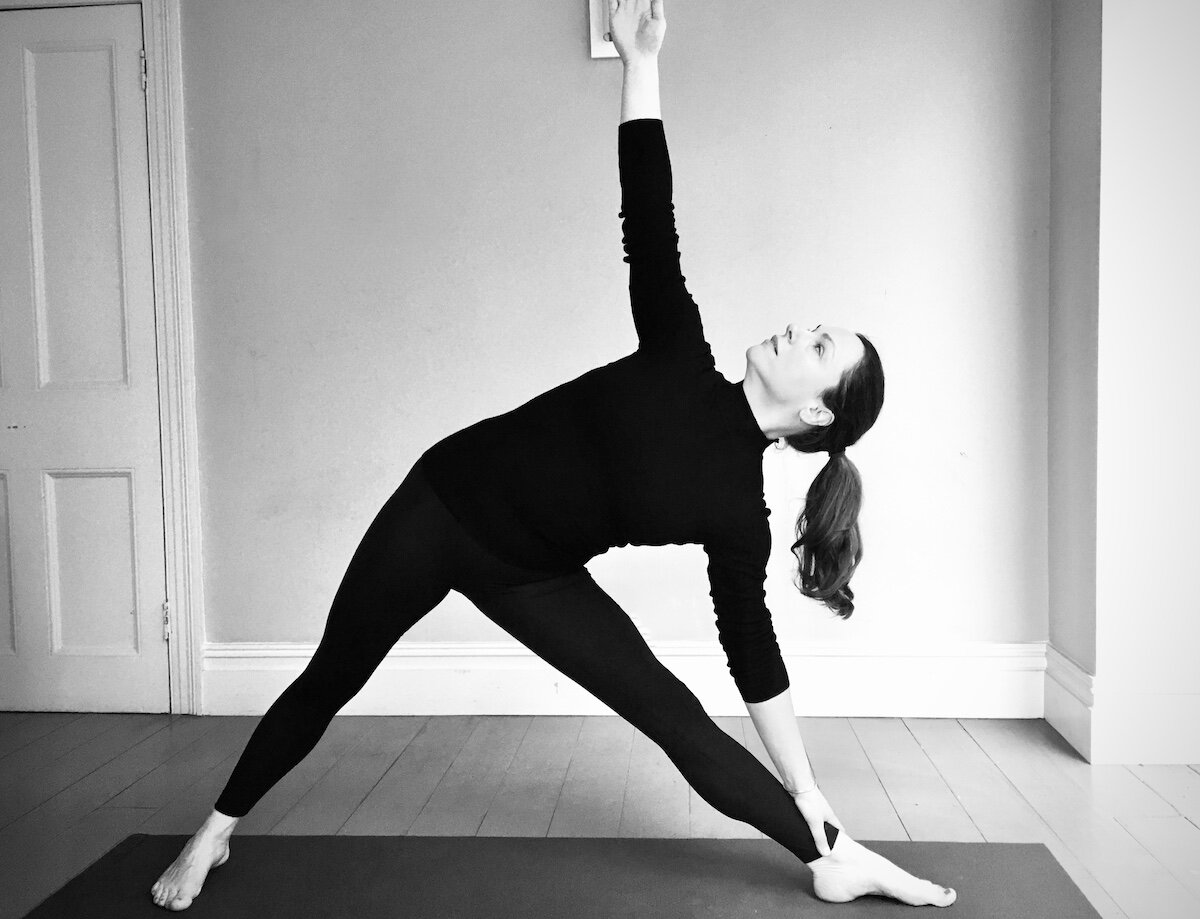Iyengar yoga places a great deal of emphasis on the standing group of asanas as the foundation of our yoga practice. They are the first poses we learn (and often practice) because they activate and strengthen our bodies in preparation for what is to come. Standing poses inform the rest of our yoga practice, teaching us many important actions which are put to use when we come to approach the different groups of asanas and more advanced poses, including inversions. As well as teaching us important muscular actions, they also teach us the fundamentals of balance and stability, while cultivating stamina and will power.
When practicing the standing poses, the balance of weight between the feet, as well as the distribution of weight throughout each foot, has an effect on the actions of the ankles and the legs, which influence the position of the pelvis and, in turn, the extension of the spine. As Mr. Iyengar puts it in Light on Yoga: “People do not pay attention to the correct method of standing. Some stand with the body weight thrown only on one leg, or with one leg turned completely sideways. Others bear all the weight on the heels, or on the inner or outer edges of the feet… Owing to our faulty method of standing and not distributing the body weight evenly on the feet, we acquire specific deformities which hamper spinal elasticity.”
We learn how to stand correctly in the most basic standing pose, Tadasana (Mountain Pose), also known as Samasthiti, which translates as “Equal Standing”. Although it is a basic pose, essentially just standing upright with the arms by the sides or stretched up over the head, there needs to be an awareness of the muscular actions and positioning throughout the body, from the soles of the feet to the crown of the head. Even the tips of the fingers should be infused with energy. Mr Iyengar says of the effects of standing correctly in Tadasana: “One feels light in body and the mind acquires agility”, and I agree - on many occasions I have started a yoga class, lacking in energy, to be revitalised by simply standing in Tadasana.
Tadasana teaches us to balance our body weight and extend our spine in a simple and symmetrical way, but many of the same actions are translated to the more complex and demanding standing postures, in which the spine may extend in a number of different directions, requiring a greater degree of flexibility, strength and balance. Still, in these more challenging poses, we must attempt to recall the feeling of Tadasana and hope to emulate that same sense of lightness in the body and agility in the mind. It is the hope that a difficult standing twist will one day be performed with similar ease. The same can be said of the inversions. When standing on one’s head in Sirsasana, applying the Tadasana actions of legs and hips brings lightness to the pose.
As well as providing us with the tools with which to advance our yoga practice, the standing asanas offer a host of benefits in and of themselves. Regular practice tones and strengthens the legs, improves flexibility throughout the body, enhances organic and respiratory function, helps to ease the symptoms of depression and anxiety and aids digestion. Body awareness, co-ordination and connectivity are improved as we learn how the whole body must work together as one balanced unit. In learning to stand correctly, our postures improve and minor deformities in the legs and feet are corrected. We are often reminded of how our sedentary lifestyles and prolonged periods of sitting can impact adversely on our health and longevity. The standing asanas are an antidote to this lifestyle, bringing vitality and energy to our bodies and enlivening our minds.



